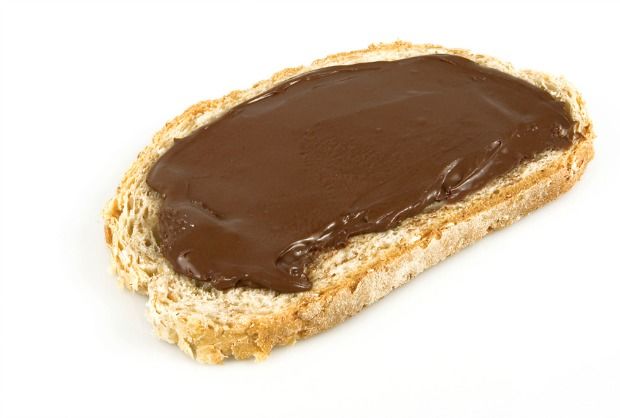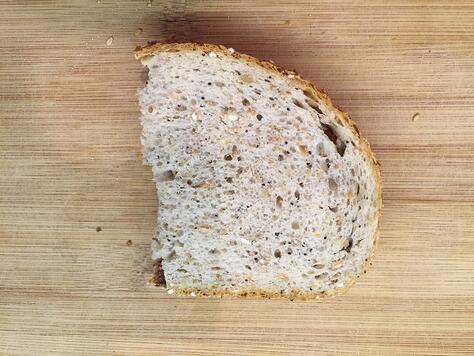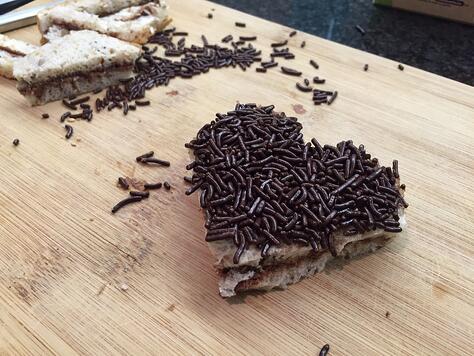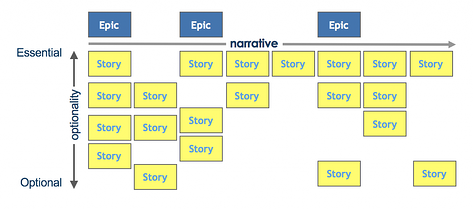
The final step in the story mapping process is the prioritization of user stories on your story map. By way of this exercise, you can determine which features should be included in the first version of your product to hit the market, the Minimum Viable Product.
But is simply being ‘Viable’ enough? Shouldn’t it be just a tad more?
Minimum Viable… What?
What is a Minimum Viable Product really? In his book The Lean Startup, Eric Ries defines it as "the version of a new product which allows a team to collect the maximum amount of validated learning about customers with the least effort."
An MVP is a basic version of your product built in a limited amount of time and with a limited amount of costs, ideally as ‘minimum’ as possible. This product is then taken to market to find out if there’s a need for it and if customers actually want to use it. Based on your learnings you can then decide whether or not to further invest in developing your product.
Is ‘viable’ good enough?
If you stick to Ries’s definition, the chocolate spread sandwich below is a Minimum Viable Product for a new snack. It’s a rudimentary version of a product made with a minimum amout of effort and costs. It can be sold and we can learn about based on customer response.
The sandwich is tasty and quiets your stomach, so it fulfills the basic requirements of a ‘snack’. But there’s only a small chance that customers will be really satisfied using such an MVP.
That’s why it’s important to not just make your minimum product ‘viable’, but also ‘lovable’. A Minimum ‘Lovable’ Product is a product that also takes the customer perspective into account.
Questions that can help turn your MVP into an MLP are:
- What small ‘delighter’ features can be added that really make a difference for your customers?
- How can you make your product ‘fun’ to use?
- Are there any minimum design requirements to make our product (more) attractive?
- What would it take for your customers to love your brand, not merely ‘tolerate’ it?
In the above snack example, the basic chocolate spread sandwich is simply ‘viable’, not ‘lovable’. An improved iteration could be the snack below:
Here, we haven’t just checked the rudimentary requirements, but we’ve also added a few extras. The sprinkles don’t just make for a tastier whole, the product becomes more beautiful as well. Removing the crusts makes it easier to chew and the heart-shape is more attractive than a boring regular leaf of bread.
This is also a product that’s easy (and cheap) to make and it can be taken to market to gauge customer response. It meets the requirements to pass as an MVP, but at the same time it’s tasty, fun to eat and it looks good too. These features make it both an MVP and an MLP.
There’s an increasingly higher chance that customers will buy it more than once and that you’ll be able to learn much more from their ‘interaction’ with the product. You’ll also immediately build an emotional connection to the product, which will turn your customers into brand ambassadors and which will do wonders for your brand recognition.
The image below clearly shows the difference between an MVP (left) and an MLP (right). In case of the MVP just a few basic features are covered, whereas the MLP looks good, trustworthy and highly usable.
Prioritizing your story map
A good way to get to an MLP is to organize a workshop with your key stakeholders in which you prioritize the various user stories on the story map you’ve created for your product. By examining all the stories with input from business, ICT and the customer, they can be placed higher or lower on the story map: the more important they are for building a successful MVP, the higher they’ll be placed. If they’re not all that important, down they go.
Once this is done, you can select a few stories to put together your MLP. Together, these stories need to fulfill the requirements of the MVP and go a little beyond as discussed above. Now, you can also set the scope of the first version of the product, build it and take it to market to capture user feedback.
The buck doesn’t stop with your MLP
Your work isn’t done because you’ve built your MLP and put it out there. It’s part of a larger, iterative process. Once you’ve learned from user experience, it’s best to run through your story map with your stakeholders once more. Based on user feedback, you can add new user stories and prioritize anew to build the next version of your product.
This process can and should be repeated, preferably in short loops. Your product will improve with each iteration, resulting in happier customers, because you keep on basing yourself on what you learn from them and their interaction with your product.
Want to discuss how to build a great product or service that is in line with what your customers really want? Let’s talk.










.png?width=66&name=Pieter%20Peremans%20(1).png)



